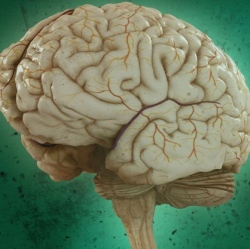
In August last year, IBM unveiled a chip designed to operate something like the neurons and synapses of the brain. Now the company has begun work on a next generation aimed at making mobile devices better at tasks that are easy for brains but tough for computers.
“We’re working on a next generation of the chip, but what’s most important now is commercial partners,” says John Kelly, a senior vice president at IBM who oversees IBM Research and several business units, including two dedicated to the company’s Watson suite of machine intelligence software. “Companies could incorporate this in all sorts of mobile devices, machinery, automotive, you name it.”
Adding brain-inspired chips to products such as phones could make them capable of recognizing anything their owners say and tracking what’s going on around them, says Kelly. The closest today’s devices come to that is listening out for certain keywords. Apple’s latest iPhone can be roused by saying “Hey Siri,” and some phones using Google’s software can be woken with the phrase “OK Google.”
IBM’s TrueNorth chip architecture, as it is called, was developed through a DARPA-funded program intended to make it possible for mobile computers to run advanced machine intelligence software such as image or speech recognition without having to tap into cloud computing infrastructure, and using very little power.
Kelly says that IBM is in discussions with leading computer system manufacturers about how TrueNorth designs could help them, but declines to name any. “We’re talking with the who’s who in the mobile space and the IoT [Internet of things] space,” he says. A TrueNorth chip would be added to device designs as a “co-processor” that works alongside the conventional processor and never powers down, says Kelly.
The TrueNorth chip unveiled last August is roughly the size of a postage stamp and has one million silicon “neurons” with 256 million connections between them that are analogous to the synapses that link real neurons. The chip consumes over 1,000 times less power than a conventional processor of a similar size. IBM has demonstrated how its network of neurons can be programmed to perform tasks such as recognizing different vehicles in video footage in real time.
However, because the TrueNorth chip architecture is very different from those in existing computers it requires new approaches to writing software. And its fake neurons work differently than the software-based artificial neural networks that companies such as Google, Facebook, and Microsoft have recently used to make breakthroughs in speech and image processing using a method known as deep learning.
